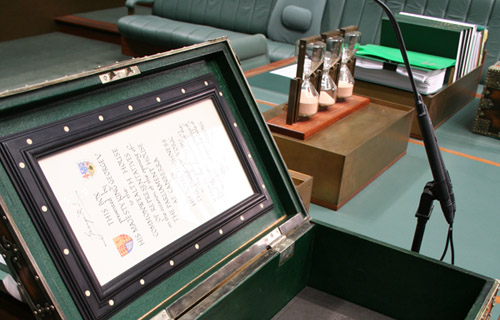
Key points:
|
An ATSB investigation into a hard landing of a commercial hot air balloon in which two passengers sustained serious injuries highlights the importance of pre-flight briefings being completed and understood by all passengers.
On 31 December 2021, a Kavanagh B-350 balloon with 16 passengers and a pilot on board took off from near Glenburn, just north of Victoria’s Yarra Valley, for a planned one-hour scenic charter flight.
About 42 minutes later, the balloon pilot learned via a radio call that the wind was increasing near the intended landing area at Yarra Glen. Over the next 17 minutes, with the wind increasing, the pilot assessed multiple landing options before making an approach to land in a field.
During the approach the pilot manoeuvred the balloon to clear a fence before descending rapidly to avoid contact with nearby powerlines, and then landing hard. The basket then tipped onto its side and dragged for 30-40 metres. Two passengers sustained serious leg injuries.
The ATSB’s investigation found that, just prior to the landing, three passengers adopted a deep squat position.
“This was not in accordance with the prescribed pre-flight passenger safety briefing,” ATSB Director Transport Safety Stuart Macleod said.
“However, not all required actions were completed during the pre-flight briefing, probably due to time pressure and the pilot’s assumption that all passengers would understand an abbreviated briefing.”
“This incomplete briefing probably resulted in these three passengers adopting an inappropriate deep squat position prior to the hard landing, causing two of them to be seriously injured.”
Mr Macleod said the hard landing is a clear reminder for balloon pilots and operators of the importance of the pre-flight briefing being thorough and clearly understood.
“The pre-flight briefing is critical in ensuring passenger preparation, particularly as opportunities to reinforce that information during the flight may be limited.”
The investigation found that although wind conditions were deteriorating, the pilot rejected several suitable landing fields to avoid post-landing logistical and operational difficulties.
“While some landing options may not be ideal due to the impact on landowner relations, or the ease of access to the site after landing, pilots are reminded to prioritise occupant safety over such considerations, when faced with deteriorating wind conditions,” Mr Macleod said.
With safe landing sites progressively reduced as the flight continued, the balloon was landed in a field which presented high risks in the prevailing windy conditions.
The field contained fences, had powerlines downwind, and was the last landing field known to the pilot along the balloon’s track.
“The landing was complicated by the balloon descending faster than intended, bouncing off the ground back into the air, and then due to manoeuvres to clear fences,” Mr Macleod noted.
“These factors, in combination with the prevailing winds and nearby powerlines, led to the pilot descending the balloon rapidly from an excessive height, resulting in the hard landing.”
“While undesirable, the hard landing was the safer option instead of risking contact with the power lines. However, hard landings still increase the risk of pilot and passenger injury.”
Although not contributing to the passenger injuries, the investigation also found that the maximum number of passengers that the balloon operator allowed to be carried on the balloon meant that there was insufficient room in the basket for passengers to adopt the backwards-facing landing position specified in the operator’s procedures.
You can find here the report: AO-2022-003: Hard landing involving Kavanagh Balloons B-350, VH BSW 2 km south of Lilydale Airport, Victoria on 31 December 2021
Last update 18 August 2022







